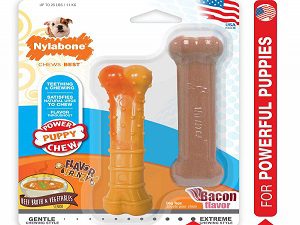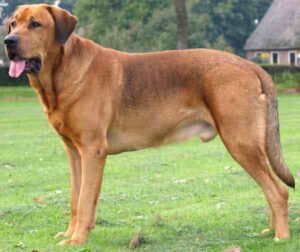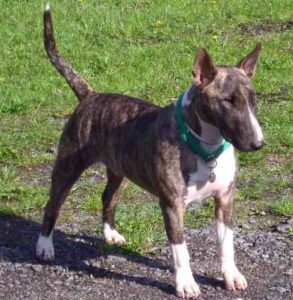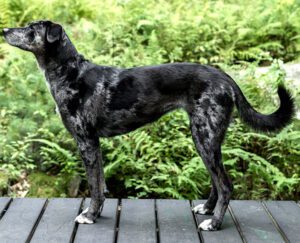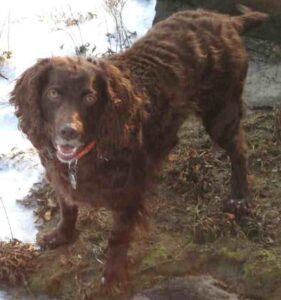The Australian Shepherd dog is a medium sized breed of dog which is also known simply as ‘Aussie’. Despite the name, the breed was originated in the Western United States, not Australia. It was developed around the time of the Gold Rush in the 1840s.
The Australian Shepherd dog breed was originally bred to herd livestock, they remain a working dog at heart. There is disagreement regarding the exact history of the breed prior to its arrival in the United States, and thus no official consensus on the origin of its name or association with Australia.
There are many theories on which breeds were used for creating the Australian Shepherd dog breed. It is likely that the ancestors of this breed include collie and shepherd-type dogs that were imported with shipments of sheep from Australia during the 1840s, hence the name.
Breeders strove to enhance their herding ability and create a dog who was versatile, hard working and intelligent. The breed enjoyed much popularity in the post-World War II years that went hand-in-hand with a renewed interest in Western-style horseback riding.
Crowds at rodeos or horse shows, and audiences of western movies or TV shows, were wowed by the athletic dogs they saw working alongside the cowboys. Despite the popular interest, the breed wasn’t recognized by the American Kennel Club until 1993.[1]
The Australian Shepherd dogs have been valued by stockmen for their versatility and trainability for many years. While they continue to work as stock dogs and compete in herding trials, they have earned recognition in other roles due to their trainability and eagerness to please and are highly regarded for their skills in obedience.[2]
Like all working dog breeds, the Australian Shepherd dogs have considerable energy and drive. They often excel at dog sports such as dog agility and frisbee and are also highly successful as search and rescue dogs, disaster dogs, detection dogs, guide dogs, service dogs, and therapy dogs. They are considered the 17th-most popular dog breed in the United States.
Today, the Australian Shepherd dogs remain the same energetic, clever and eye-catching dogs that proved so useful to farmers and ranchers in the old West. They are loved by many people and they enjoy their life as a family companion, protector and herding dog.
Australian Shepherd Dog Characteristics
The Australian Shepherd dogs are very beautiful medium-sized dog breed. They are intelligent working dogs with strong herding and guarding instincts. They are a loyal companion and have the stamina to work all day.
The Australian Shepherd dog is well balanced, slightly longer than tall, of medium size and bone, with coloring that offers variety and individuality.
The breed is attentive and animated, lithe and agile, solid and muscular without cloddiness. The coat is of moderate length and coarseness. Their tail is docked or naturally bobbed.
Recognized coat colors of the Australian Shepherd dogs are solid black, solid red, blue merle, and red/liver merle; each of these colors may also have copper (tan) points or white markings in various combinations on the face, chest, and legs.
Average height of the mature dogs is between 19 and 23 inches at the withers for males, and between 18 and 22 inches for the females. Average live body weight of the mature male dogs is between 18 and 32 kg, and between 16 and 29 kg for the females.

Temperament
Bred to be pushy with livestock, Australian Shepherd dogs can and will take the dominant role in the home if you don’t give them firm and confident leadership. This makes them a poor choice for first-time or timid owners.
Like many other herding dogs, the Australian Shepherds are by nature loyal to their family but standoffish with strangers. So they need early socialization-exposure to many different people, sight, sounds and experiences when they are young.
Socialization helps to ensure that your puppy grows up to be a well-rounded dog. Enrolling them in a puppy kindergarten class is a great start. Inviting visitors over regularly, and taking him to busy parks, stores that allow dogs, and on leisurely strolls to meet neighbors will also help him polish his social skills.
Lifespan
Average lifespan of the Australian Shepherd dogs is between 12 and 14 years.
Feeding
How much a mature dog eats depends on it’s size, age, build, metabolism and activity level. Dogs are individuals, just like people, and they don’t all need the same amount of food. The Australian Shepherds are a medium sized dog.
So, their diet should be formulated for a medium sized breed with average or high energy and exercise needs. Generally 1.5 to 2 cups of high quality dry food will be enough for these dogs. Although, you can consult with your vet for better recommendations.
Caring
Taking good care of the animals is very important for raising Australian Shepherd dogs. If you have a yard, make sure you have also got a secure fence that your dogs can’t dig under.
These dogs need a half hour to an hour of stimulating activity every day, such as a run, a Frisbee game or obedience or agility exercises. When you’re not playing with your dog, puzzle toys such as Buster Cubes are a great way to keep that active mind occupied.
Puppies don’t need as much hard exercise as adults, and in fact, you shouldn’t let them run them on hard surfaces such as concrete or let them do a lot of jumping until they’re at least a year old. It could stress their still developing skeletal system and cause future joint problems.
The habit of nipping and chasing of the Australian Shepherd dogs is excellent for herding sheep, but bad manners when it’s applied to humans and other pets. Obedience class can help you curb your dog’s herding behavior, and they help satisfy it’s need for mental stimulation and work too.
The Australian Shepherd dogs respond well to training methods that use positive reinforcement; rewards such as praise, play, and food — and are usually happy to take commands from their trainer. They just want to know who’s in charge so they can do a good job for them.
Health
The Australian Shepherd dogs are generally healthy. But like all other dog breeds, they are also prone to certain health conditions.
Their common health problems include hip dysplasia, elbow dysplasia, hypothyroidism, and von Willebrand’s disease. Always keep good contact with a vet in your area.
| Breed Name | Australian Shepherd |
| Other Names | Aussie |
| Breed Size | Medium |
| Height | Between 19 and 23 inches at the withers for males, and between 18 and 22 inches for the females |
| Weight | Between 18 and 32 kg for males, and between 16 and 29 kg for the females |
| Good as pets | Yes |
| Climate Tolerance | All climates |
| Color | Tri-colored (black/red/blue), Bi-colored (black/red/blue), blue merle/ red merle |
| Lifespan | Between 12 and 14 years |
| Good for children | Yes |
| Rarity | Common |
| Country of Origin | United States |

